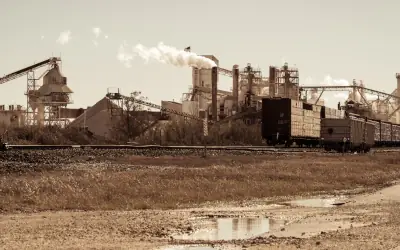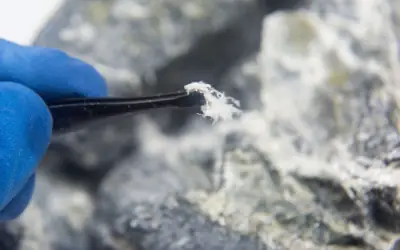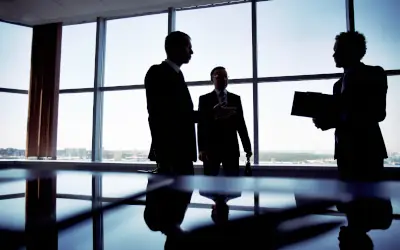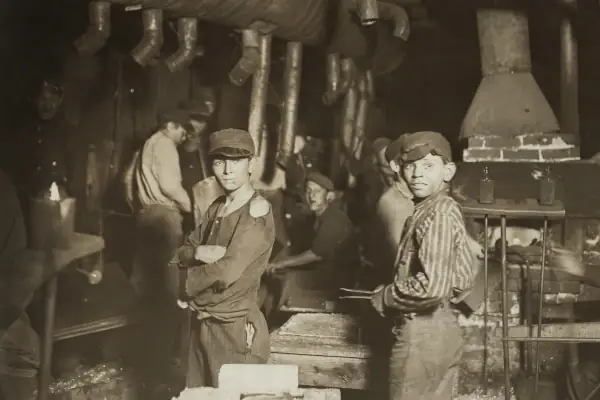Most people recognize asbestos as a dangerous material linked to severe health issues like lung cancer and mesothelioma. Found in older buildings and products, it stands as a reminder of a time when its fireproof and durable properties made it highly sought after.
Yet, the story of asbestos is far more complex than many realize. Its use spans thousands of years, from ancient civilizations to the height of the industrial age. Alongside its rise came mounting evidence of its dangers, suppressed for decades by those who profited from its use. Understanding this history reveals a cautionary tale still relevant today.
The Early Uses of Asbestos
The Egyptains
The Egyptians utilized asbestos as early as 2000 BCE, incorporating it into funeral rituals. They wove the mineral into cloth used to wrap mummies, relying on its fireproof and decay-resistant properties to preserve the dead. This practice aligned with their focus on immortality and the afterlife.
Table of Contents
Use and Descriptions by Greeks and Romans

The Greeks valued asbestos for its remarkable durability and fireproof properties. It was used in wicks for sacred lamps and woven into fabrics for ceremonial purposes, such as funeral shrouds. Herodotus described how fire-resistant cloth was used to protect bodies during cremation, highlighting its sacred and practical roles.
The Romans expanded the uses of asbestos, incorporating it mainly into textiles like tablecloths that were cleaned by throwing them into fire. They also used asbestos for items like cremation robes and candles wicks. They marveled at its unique qualities, even calling it the “indestructible linen,” unaware of any health risks associated with its use or production.
Pliny the Elder was a commander in Rome, who took an interest in understanding the natural world. He wrote about asbestos and admired it for its fireproof nature and durability, documenting its use in various Roman industries. He believed Asbestos was made from plants, owing to it’s fibrous nature, a fact that was quite distant from the truth. Many believe that Pliny the Elder knew about asbestos’s negative effects, however, they appear to be mistaking his descriptions of cinnabar miners covering suffering from respiratory issues with asbestos miners. There’s no evidence that Pliny knew of asbestos’s risks, as asbestos poses risks over the span of decades, not days, and it’s unlikely he would’ve made the connection.
Medieval Europe
How The Industrial Age Led to A Surge of Asbestos.
The Industrial Age revolutionized asbestos use, as its heat resistance and durability made it invaluable in manufacturing and construction. Factories, railroads, and shipyards relied on asbestos to insulate machinery, prevent fires, and strengthen materials, driving its mass extraction and global trade during the 19th and early 20th centuries. Asbestos made it’s way into:
- Insulation for pipes, boilers, and machinery.
- Fireproofing materials for buildings and ships.
- Reinforcement in cement, roofing shingles, and tiles.
- Brake pads and clutch linings in vehicles.
- Heat-resistant textiles for industrial and household applications.
- Protective clothing for workers exposed to high temperatures.

By the 20th century, Canada, Russia, and South Africa were among the key exporters of asbestos. Canada’s mines, particularly in Quebec, contributed significantly to the global supply. Russia’s Ural mines also played an important role, while South Africa provided substantial quantities to Europe. These nations met a growing demand for durable and cost-effective building materials, which included asbestos for specific industrial applications. Asbestos transitioned from a rare, high-value material to a common resource in various sectors.
The asbestos industry became a significant economic sector by the mid-20th century, valued in the hundreds of millions. Its affordability and fire-resistant properties made it popular for industrial use, particularly in construction, shipbuilding, and automotive manufacturing. While important for economic growth in some regions, its use remained largely dependent on industrial and infrastructure needs rather than widespread consumer applications.
It was used in constructing schools, hospitals, factories, and homes, particularly in insulation, roofing, and cement. Its fire-resistant properties made it essential for safety standards, while its durability allowed it to support the demands of growing urbanization and industrial expansion, further solidifying its global importance.
The Earliest Cases of Toxicity
Between 1899 and 1906 inspectors in Britain started to notice unusual rates of illness in asbestos workers. They attributed this to the lack of proper ventilation, and lack of effort to reduce dust in areas where asbestos was moved. They were able to demonstrate that asbestos miners were at greater risk of death by unexplained illnesses, and noticed every time they inspected an asbestos factory there was some case of illness or death.

In 1906 Dr H Montague Murray did an autopsy on a 33 year old patient who worked in asbestos for almost half his life. Upon conducting the autopsy he found his lungs were scarred and full of asbestos fibers. The passed a report on his findings to The Departmental Committee for Industrial Disease so that compensation could be given in accordance with the danger faced by asbestos workers. The next year the committee updated The Compensation Act, and added 6 industrial diseases, none of which were asbestos related.
In the early 1900s insurance companies understood that asbestos had a shortening effect on lifespan, and began to deny coverage to asbestos workers.
By the 1920s there was mounting evidence of asbestos’s toxicity. Medical journals published asbestosis cases, and experts began arguing that it should be added to the list of occupational diseases. By 1930 asbestos was added to the list of compensable diseases. By 1935 It was well accepted within the medical community that asbestos led directly to lung problems.
The Coverup By Asbestos Companies
In the 1930s, Dr. A.J. Lanza conducted a study funded by asbestos companies to investigate health risks. Under pressure from asbestos companies the finding were skewed. It primarily tested workers with only short-term asbestos exposure, failing to account for long-term effects like asbestosis or cancer. These incomplete findings were exploited by the industry to falsely claim asbestos was safe, protecting their own profit margins.
Around the same time Saranac Laboratory, funded by asbestos companies, found clear evidence linking asbestos exposure to lung disease. However, corporate sponsors had the final say on what finding were published and which were not. Professors were pressured to focus on less damning aspects, as serious finding were delayed indefinitely.
Johns-Manville, once the largest asbestos manufacturers in the United States, knew as early as the 1930s that asbestos exposure was dangerous. Internal memos revealed corporate officials discussing “asbestos-related lung diseases” among workers. One infamous memo referred to their plan to “maintain silence” to avoid legal liability. In one instance, a physician was instructed not to inform workers of their diagnoses. A 1949 internal letter stated, “The less said about asbestos, the better off we are.” Despite mounting evidence, Johns-Manville continued profiting from asbestos while suppressing studies and silencing victims through out-of-court settlements.
In a 1966 memo, a Bendix Corporation executive summed up the asbestos companies’ attitude, stating, “if you have enjoyed a good life while working with asbestos products why not die from it?”

The Ban Of Asbestos

Asbestos companies responded to early legislation by lobbying against stricter regulations, funding studies to downplay health risks, and shifting operations to countries with weaker safety laws. They launched public relations campaigns to preserve asbestos’s reputation and sought loopholes to continue production. Many rebranded or diversified to avoid liability, while aggressively fighting lawsuits to minimize financial losses. Ultimately they had to switch to other materials and go in new directions to avoid going under.
The 1980s and 1990s saw expanded efforts to ban asbestos globally. Many countries, including Australia and the European Union, implemented outright bans. In the U.S., the EPA attempted a full ban in 1989 under the Toxic Substances Control Act, but it was partially overturned in 1991.
Asbestos In The Modern World
Prior to 2024, asbestos was not fully banned in the United States. While many uses were prohibited under regulations like the Toxic Substances Control Act, some applications, such as in certain building materials and automotive parts, remained legal. However, in March 2024, the U.S. Environmental Protection Agency (EPA) finalized a rule banning the ongoing use of chrysotile asbestos, the only form still used or imported into the United States.

Asbestos remains a significant concern in existing homes, especially those built before the 1980s. It was commonly used in insulation, flooring, roofing, and other construction materials due to its fire-resistant properties. Afterall, decades and decades of constant use don’t go away overnight. Though not dangerous unless disturbed, exposure to asbestos fibers can cause serious health issues if inhaled. The risk of asbestos in existing buildings is prominent enough that after 9/11, there was an uptick in asbestos related deaths among responders, as the twin towers were made using asbestos. Thus homeowners renovating or repairing older properties should take precautions, including professional asbestos testing and removal, to prevent accidental exposure and safeguard health.
Asbestos remains a hidden danger in many older homes and buildings, posing serious health risks when disturbed. Whether renovating, remodeling, or maintaining older properties, it’s crucial to seek professional asbestos abatement services. Experts can safely identify and remove asbestos, ensuring your home is safe from harmful exposure. Don’t take chances with your health—take action today and consult a licensed professional to protect yourself and your loved ones from asbestos-related diseases. Take a look at our asbestos removal page to see more.


